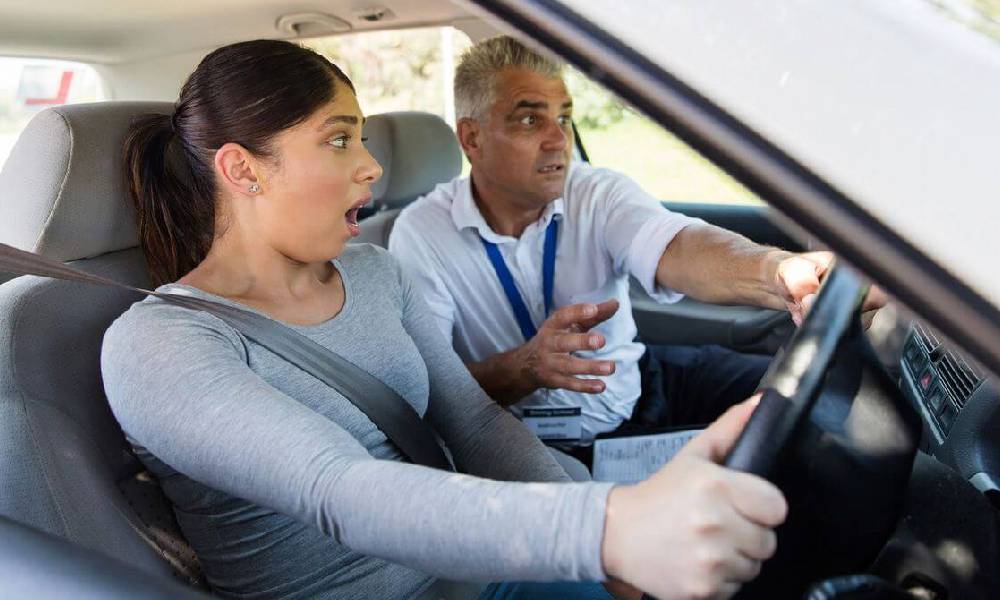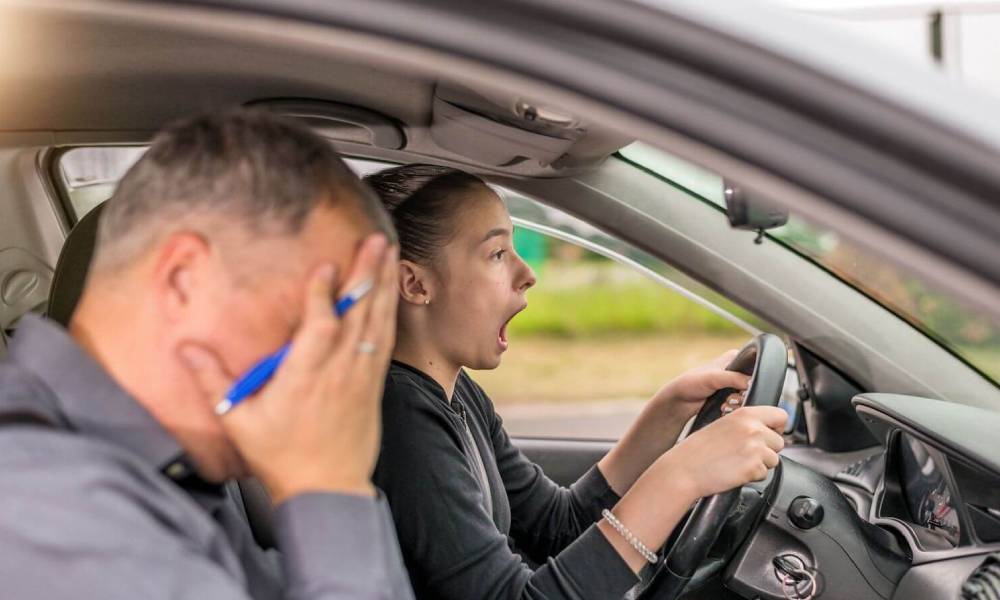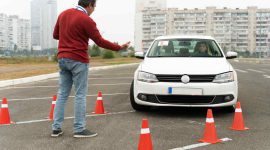The driving test can be a nerve-wracking experience, but being aware of the most common faults and knowing how to avoid them can significantly increase your chances of passing. This blog will discuss the most common driving test faults and provide valuable tips and techniques to help you avoid them.
Types of Driving Test Faults
There are three main types of driving test faults:
Driver Faults: These are minor faults; you’ll fail the driving test if you make 16 or more of these faults.
Examples:
Driver faults include:
- Not using the clutch properly
- Stalling
- Not signalling appropriately
- Improper use of the gear
- Coasting
Serious Faults: These are server faults, and only one of them will result in your driving test failure. These can also be dangerous to you and other drivers on the road.
Examples:
Serious faults include:
- Poor control of the steering
- Disobeying traffic signals
- Not checking mirrors before making turns
- Ignoring observations at junctions
Dangerous Faults: These are the most serious ones and can endanger your life and others. It may result in ending your test as it is highly dangerous for your safety.
Examples:
Dangerous faults include:
- Not checking blind spots
- Not slowing vehicle during lane changing
- Making left turns without checking mirrors
Most Common Driving Test Faults and Ways to Avoid Making Them

| Common Driving Faults | Solutions |
| Judgement at junctions | · Take extra time to assess the traffic flow
· Look both ways before proceeding |
| Not checking the mirrors | · Regularly check mirrors for other vehicles
· Use mirrors before signalling or changing lanes |
| Not positioning correctly at junctions | · Position the vehicle correctly within the lane |
| Move off fault | · Apply the handbrake properly before moving off
· Check blind spots for pedestrians or vehicles
|
| Improper steering control | · Hold the steering wheel correctly and firmly
· Avoid jerky or sudden movements |
| Not responding to traffic light signals | · Observe and react to traffic lights promptly
· Proceed on green, stop on red |
| Reverse parking fault | · Use mirrors and check blind spots while reversing
· Proceed on green, stop on red |
Judgement at Junctions
Not observing junctions is the most common driving fault that may cause serious accidents. The examiner closely monitors your observation skills and how well you handle a junction.
Here are some most common junction observation faults:
- Entering a roundabout with bad judgement
- Estimating the speed of an incoming vehicle
- Poor observations when approaching a dual highway from a slip road
- Not stopping at intersections and driving straight through
- Making zero observations at all
- Observing junctions too late while turning
- Not observing the left when turning left
How to Avoid:
Making the following observations at junctions can be helpful:
- When approaching a junction, make sure to check blind spots and side mirrors every time.
- Recognising that the road ahead is congested and slowing down to wait your turn
- Recognising that there is a motorcycle rider nearby who will also be turning into the intersection
- Observing people approaching the roadway who may choose to cross the road in front
Not Checking the Mirrors
These are the common faults which include not checking mirrors properly before changing lanes or at junctions. Your examiner will check how aware you are of your surrounding. Maintaining awareness of your surroundings will help you anticipate possible hazards, making you a safer driver.
How to Avoid:
Checking your mirrors every time your actions may influence other drivers to adjust their driving behaviour is an excellent way to remember when to use them. This involves slowing or speeding up, changing lanes, negotiating a danger, and merging onto another route.
Not Positioning Correctly at Junctions
For many driving learners, turning right at a crossroads may be a particularly nerve-racking task. This technique is especially hazardous, so be cautious and only perform it when you are completely confident.

How to Avoid:
To avoid, you will need to master the turn, position your vehicle properly, observe the speed and distance of oncoming traffic and judge your time properly.
Move Off
Many people make the mistake of moving off improperly, which causes them to fail their driving test. It is a crucial skill for keeping you and others safe on the road. One of the must-have skills to learn when driving a car is how to safely move out of a parked position. However, when you take your test, making this mistake is common because you’re nervous at that time.
The aim of having a driving test is to ensure that you are a safe driver, so the examiner will be watching your every move.
How to Avoid:
You need to be observant, maintain control of the vehicle, and be aware of your surroundings. Practice and preparation are crucial to mastering the skill of moving off safely.
Improper Steering Control
Poor steering control might cause driving test failure and will be reported as a ‘Control – Steering’ issue. According to Gov.uk, poor control during turns caused one out of every ten vehicle accidents in 2019. You must have complete steering control to prevent hitting a parked car and safeguard other road users and pedestrians.

The following are the most common causes of steering control failure:
- When turning, either not steering sufficiently or steering too late
- Poor steering control when driving around a corner
- Too late steering out when passing vehicles
How to Avoid:
- Hand Placement: Maintain proper hand placement on the steering wheel at the recommended positions (e.g., 9 and 3 o’clock). Avoid crossing your hands or using one hand excessively.
- Smooth Movements: Make smooth and controlled steering movements, avoiding sudden jerks or sharp turns. Use gentle and gradual steering inputs to maintain a steady course.
- Observation and Positioning: Continuously observe the road ahead and adjust your steering accordingly to maintain the correct road position. Stay within your lane and be mindful of any road markings or obstacles.
- Practice: Regular practice with a qualified driving instructor or supervisor can help improve your steering control. Focus on developing a smooth and precise steering technique through practice sessions.
Not Responding to Traffic Light Signals
Not responding correctly to traffic lights may cause you to fail your driving test under the “Response to signs-Traffic lights” fault. Learning about traffic light signals for safe and responsible driving is important.
How to Avoid:
Adhere to traffic signals and follow their instructions promptly and safely. Stop at a red light, proceed on the green, and yield appropriately when facing a yellow light, considering the specific traffic conditions.
Reverse Parking Fault
The reverse parking driving fault, or parallel parking, refers to an error made while attempting to park a vehicle in a parallel position to the curb. This manoeuvre requires skill and precision to position the vehicle correctly within a limited space. Common faults in reverse parking include hitting the curb, misjudging distance, improper angle, or taking multiple attempts to complete the manoeuvre.
How to Avoid:
- Practice: Regularly practice reverse parking in various settings to improve your skills. Find empty parking spaces, set up cones to simulate the curb, and practice manoeuvring into the designated area.
- Observation: Before initiating the reverse parking manoeuvre, carefully observe the space and surrounding area. Check for any obstacles, pedestrians, or other vehicles that may affect your manoeuvre.
- Slow and Steady: Approach the parking space slowly and maintain a controlled speed throughout the manoeuvre. Avoid rushing or making sudden movements, as this can lead to errors.
- Use Mirrors: Utilise your side mirrors to monitor your positioning and distance from the curb.
- Adjustments: Make small adjustments as needed during the parking manoeuvre. Correct your steering, speed, and angle to ensure a smooth and accurate parking position.
Takeaway
The key to passing your driving test lies in recognising and addressing the most common faults that can occur. By practising and honing your skills, paying attention to details, and following the tips provided, you can avoid these faults and increase your chances of a successful test outcome. By understanding these faults and implementing the suggested strategies, you’ll be better prepared to pass your driving test and become a confident and safe driver.



